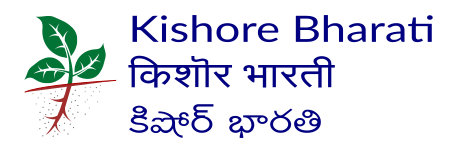Phase II (1972-82): Engagement with Reality — Multi-Dimensional Response
Even before the work on the Palia Pipariya rural campus in Foshangabad Distt. took off the ground, the sustained questioning by Sudarshan Kapoor of Friends Rural Centre, Rasulia (1971-72) began to influence our original thoughts. This is the story of how the idea of setting up an isolated Nai Taleem experimental school was being questioned on the ground of it having, at best, only a marginal impact on the prevailing education system, apart from the possibility of dying its ‘slow death’ as has been the case with thousands of such attempts in the recent past. At the same time, the questioning emphasized the priority of intervening in the established school system, being essentially a government school system at that stage of pre- globalisation Indian economy. The outcome was the plan to intervene in 16 Government middle schools of Hoshangabad and Bankhedi Blocks, later to be termed the Hoshangabad Science Teaching Programme (HSTP). The work on the rural campus also started around the same time. The form and content of the rural campus along with the Nai Taleem experimental school was further influenced by the addition of a significant minor irrigation programme based on the appropriate technology of Ring Wells as well as a cattle breeding-cum-animal husbandry programme. That these programmes also enriched the Nai Taleem idea, is a different matter. Soon, a set of agricultural innovations aimed at engaging with cultivation in sandy soil began to occupy the central stage due to the physical and social reality of the campus. KB’s attempt to set up a cottage industry — production of electrical chokes for tubelights and training programme for repair of electrical motors of pump sets — is yet another evidence of how the Nai Taleem idea was being transformed into a multi- dimensional rural development programme.
In terms of phasing, HSTP preceded the Nat Taleem experiment (the first teacher- training was held in May 1972) and rapidly overtook all other priorities. By 1973, the Nai Taleem experiment also took shape in this vibrant milieu of rural development, on the one hand, and HSTP, on the other. This experiment with a handful of school drop-outs from poor peasant families, though lasting only for 5-6 years, was unexpectedly a rich experience that unfolded a range of radical pedagogic possibilities that seemed to transcend even Gandhi’s own ideas, at least as far as practiced by his followers since early 1940s. It was through this experiment that we could discover Freirian pedagogy of social transformation well before it became known in the Indian educational ethos. The formal introduction to Freire’s ‘Pedagogy of the Oppressed’ by Datta Savle, the radical pedagogue of the tribal movement in Maharashtra awakened us to a new educational discourse in the post-emergency period (from 1977 onwards).
By the time, the political emergency ended, the 6-year old HSTP had succeeded in establishing the basic validity of both the radical pedagogy of science ediication as well as of the crucial role of pro-people intervention in government school system. The time was ripe to convert the pilot-scale lntervention into an institutionalized intervention calling for major structural changes w’ithin the school education system. A joint FIIC, Rasulia and KB proposal to the state government set the ball rolling. In 1978, HSTP expanded from a 16-school intervention to all the 280 odd middle schools of Hoshangabad District, touching all structures and processes of school education — from teacher education, school time table and textbook writing to evaluation and assessment. By 1981, with FRC, Rasulia having withdrawn from HSTP, KB was leading the programme from village schools and teachers to the corridors of Government Colleges in M.P., Delhi University, IITs and NCERT/ UGC/ Ministry of Education— something entirely unanticipated in the original scheme of things.
Public health was then emerging as a national issue. KB, too, set up a mini- experiment called ‘Zaroori Dawai Suvidha’ involving the oppressed classes and castes in the village, particularly women. By early 1980s, investigations into the people’s perceptions of fertility and child birth became new concerns in KB’s consciousness. Thus KB way initiated, though reluctantly, into the feminist discourse then beglnning to capture the attention of the progressive sections of society, at least among metropolitan middle classes.
HSTP also drew KB into People’s Science Movement led by Kerala Shastra Sahitya Parishad (KSSP), opening up new possibilities of people’s education.
KB had by then become virtually a ‘pilgrimage centre’ of the progressive lntelligentsia from all over the country — a role for which we were most ill- prepared ideologically as well as strategically. Yet, the KB ambience was then pregnant with optimism and faith that “education in this wider sense can lead to social transformation”. Nothing could then diffuse the enthusiasm of the young highly educated ever-expanding team then gelling around KB.
KB also decided to support the then nation-wide endeavour to resist assault on people’s democratic rights and civil liberties. Beginning in 1980, we played a key role in building up the state PUCL and working with PUDR, Delhi in carrying out investigations of violations of the Constitutional rights of the masses, not just in M.P. but beyond in neighbouring states like Maharashtra and Andhra Pradesh as well.
Grounded in KB’s own rich campus-based library and documentation centre, a series of mobile libraries started functioning in the surrounding villages. Shaheed Bhagat Singh Pustakalaya Evam Sanskritik Kendra, supported by the youth inspired by the ideology of Lohia and Kishen Patnaik, was set up in Papiaria town. This Kendra undertook intensive work with both village and kasbai children outside the schools which included a newspaper edited by the children themselves. The Kendra’s progressive lecture series organized in Piparia became the fertile ground of progressive ideas in a knshni environment, otherwise dominated by the big peasantry and grain traders.
A study group began to function by 1982 to study ‘The Capital’ by Marx.
KB was no more a naive romantic experiment in rural development, Nai Taleem, HSTP or otherwise!
